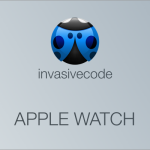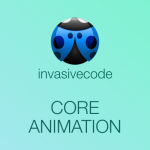Pervasive usability
The WWDC 2011 closed its doors 10 days ago. This year it was all about software for both the iOS and the Mac OS X. Many people were expecting new Macs and a new iPhone, but no new hardware for the moment. Instead, a new release of the Mac OS X (Lion) and a new release of the iOS (both in beta version for the moment) were the main novelties together with the new iCloud.
Reviewing my notes and my thoughts about the WWDC and watching again the Steve Jobs keynote, I believe the most interesting announcement was the new vision of Apple of merging its 2 major platforms: iOS and Mac OS. And the transition is starting now. But what does that mean exactly?
Apple is well known for its user-centered design, also known as (and I like more this terminology, because more close to my concept of design) “pervasive usability”. Now, if you think more carefully about the iPhone, iPad and Mac, at the human-machine-interaction (HMI) level, they are currently 3 very well different devices: the iPhone represents a “pure mobile” device, while the Mac is a more steady device (yes, I know the new version of the MacBook Air is more “mobile” than the rest of the family, but you need a desk to use it). The iPad is just the device in the middle between the iPhone and the Mac: you can use it while moving, but it provides a more immersive experience than the iPhone, so sometimes you need to stop. So, on one side you have the iPhone and on the other side you have the Mac. In the middle you have the iPad.
How different are they today? I think the distance between them is shortening from a user experience point of view. Indeed, thinking of their usability: we use them in different spatial and temporal situations and conditions. The iPhone is a mobile device that you use while moving. The Mac is more an “environment for work”. The iPad is more an entertainment platform. Well, this was true just at the beginning, when Apple launched them on the market. But after people started to use them and got used to them, they started to use the iPad, the iPhone and the Mac in a different way than what they were conceived for and, very important, mixing their use. Now, I don’t know if this was something Apple prepared for us or something they were not aware of, but if you think of the fact we just entered the so-called “post-PC era”, all this overlapping makes sense.But wait a minute, there is still a piece missed. The assets. Yes, we interact with these machines to create or consume data, pictures, movies, documents, books, information, etc. The user experience of these devices would be very poor without our digital assets, right? Well, now you are served. You just got the missed piece and is called “iCloud”. This new component will make everything more pervasively usable and the devices will become even more similar. And not because Apple is imposing that to use, but because we try to use the same piece of data or information where ever we are and at any time. These devices will become transparent to us who want just to manipulate our data.Ok, but what about the usability.
Well, here is the point. The actual differences due to the different nature of the iPhone, iPad and Mac are covered from the new Lion (Apple wants us to swipe windows and not scroll them and use more the trackpad than the mouse), the new iOS 5 and the iCloud.





